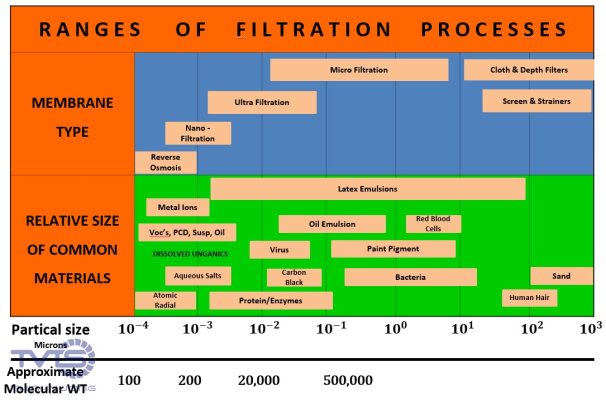Nội dung
1. Principle of water filtration of RO technology
RO (Reverse Osmosis) water filtration technology is an advanced method that uses a semi-permeable membrane to remove salt, minerals and impurities from seawater, creating a source of pure fresh water. The RO membrane has an extremely small pore size (about 0.0001 micron), allowing only water molecules to pass through, while retaining salt ions and bacteria.

The operating principle of the RO system is based on high pressure pushing seawater through the filter membrane. Impurities are retained and discharged, while pure water continues to be collected for use.
2. Steps in the process of filtering seawater into fresh water
The RO seawater filtration system operates through multiple stages to ensure optimal filtration performance:
Step 1: Seawater pretreatment
- Large dirt removal: Seawater is pumped into the system and passes through coarse filters to remove sand, algae and large impurities.
- Chemical treatment: Add anti-scale and anti-microbial chemicals to protect the RO membrane.
- Fine filtration: Use a fine filter (5 micron) to remove remaining small particles, helping to reduce pressure on the RO membrane.
Step 2: Reverse osmosis (RO) filtration
- Pre-treated seawater is pumped at high pressure (usually 800 – 1000 psi) to push through the RO membrane.
- The RO membrane retains salt, heavy metals, bacteria and contaminants.
- The filtered fresh water is collected in a holding tank, and the concentrated brine is discarded.
Step 3: Stabilize output water quality
- Adjust the pH to suit your needs.
- Add necessary minerals to make the water more drinkable (for domestic water).
- Disinfect with UV light or ozone to ensure absolutely safe clean water.

3. Những yếu tố quyết định hiệu suất lọc
1. RO membrane quality
The higher the quality of the RO membrane, the more effective it is in removing salt and impurities, prolonging the life of the system.
2. High pressure pump pressure
The system needs enough pressure to push seawater through the RO membrane. Insufficient pressure will reduce filtration efficiency and increase the risk of membrane clogging.
3. Water pretreatment quality
Good pretreatment helps protect the RO membrane from scale, bacteria and other damaging agents, prolonging the life of the system.
4. System maintenance and cleaning frequency
Regular maintenance and cleaning of the system helps maintain stable performance and prevent RO membrane clogging. Usually 2 times/month.

4. Conclusion
RO seawater filtration system is an effective solution to create fresh water from seawater, especially important for areas with water shortages. Understanding the operating principles and influencing factors helps optimize the performance and lifespan of the system.
Contact TVTS now for detailed advice on the RO seawater filtration system that suits your needs!



